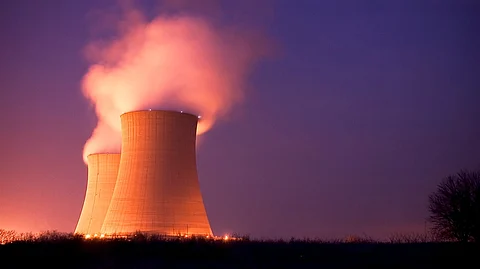

New Delhi: India’s new nuclear power roadmap has outlined a clear technology pathway to reach 100 gigawatt (GW) of installed capacity by 2047, identifying the share of each reactor type, the sequencing of projects, and the reforms needed to mobilise investment and manufacturing at scale.
Follow Energy Watch on X
The Roadmap for Achieving 100 GW of Nuclear Power Capacity by 2047 marks the most detailed plan yet to realise the target first announced by Prime Minister Narendra Modi as part of India’s broader clean energy and energy security vision for the country’s centenary year of Independence. It aims to expand India’s current capacity of just over 9 GW nearly eleven-fold, building a diversified and resilient reactor fleet that can provide dependable baseload power in a decarbonised system.
The roadmap envisions 50 GW coming from pressurised heavy-water reactors (PHWRs), 20 GW from light-water reactors (LWRs) through global collaborations, 5 GW from fast breeder reactors (FBRs), and another 5 GW from small modular reactors (SMRs). The remaining capacity would be met through the life-extension of existing plants and next-generation advanced reactor designs.
According to the document, this technology segmentation is designed to balance near-term scalability with long-term innovation. The government intends to prioritise PHWRs over the next decade, leveraging existing designs and manufacturing capability to accelerate deployment. In parallel, it will pursue international cooperation to source and co-develop LWRs, while fast breeder and SMR projects mature toward commercial readiness in the 2030s and 2040s.
Reaching 100 GW by 2047 will require India to commission around 3.5–4 GW of nuclear capacity every year—a tenfold increase over its current build rate. The roadmap acknowledges that such a scale-up will demand not just capital and construction efficiency but also deep reforms in governance, project financing, and the legal framework for nuclear power generation.
It calls for the establishment of a National Nuclear Energy Mission, which would define decadal milestones, ensure coordinated implementation, and monitor progress. The mission would function under the supervision of a proposed Nuclear Energy Development Board (NEDB) housed within NITI Aayog, responsible for inter-ministerial coordination, project approval, and investment facilitation.
One of the most significant policy shifts in the roadmap is its recommendation to amend the Atomic Energy Act, 1962, to allow private participation in nuclear power generation. At present, the operation of nuclear reactors is reserved for government-owned entities such as the Nuclear Power Corporation of India Ltd (NPCIL).
The proposed amendment would enable private players to own and operate reactors under a regulated licensing framework, bringing India’s nuclear sector closer to global practice. It also recommends revisiting the Civil Liability for Nuclear Damage Act to address insurance and indemnity challenges that currently deter investors and equipment suppliers.
These changes, the document notes, are essential for building a hybrid public–private model that can unlock financing, accelerate project execution, and develop a competitive manufacturing ecosystem.
To mobilise the capital required for such large-scale expansion, the roadmap proposes classifying nuclear power as “green” within India’s sustainable finance taxonomy, bringing it on par with renewables and low-carbon technologies in terms of access to concessional funding.
This would allow the government and project developers to tap sovereign green bonds, viability gap funding, and long-term power purchase agreements (PPAs) structured for stable revenue visibility. The document also explores the use of infrastructure investment trusts (InvITs) and public–private partnerships (PPPs) to finance new projects and retrofit existing ones.
By integrating nuclear energy into the green finance framework, the government expects to attract institutional investors, sovereign wealth funds, and climate-aligned private capital — marking a shift from the earlier reliance on public equity and government-guaranteed loans.
A distinct section of the roadmap focuses on small modular reactors (SMRs), which it describes as “a critical pathway for distributed, flexible, and industrial-scale nuclear generation”. The document proposes launching a public–private demonstration project within five years and sets a target of 4–5 GW of SMR capacity by 2040.
It identifies coastal brownfield sites and industrial corridors as preferred locations and recommends that the Department of Atomic Energy (DAE) lead a national SMR programme in coordination with NITI Aayog and the Ministry of Power.
In parallel, the roadmap calls for an indigenous “Make in India for Nuclear” initiative to localise reactor manufacturing. It names BHEL, Larsen & Toubro, and Hindustan Shipyard among potential anchor manufacturers for reactor components and heavy engineering. The plan also includes scaling up uranium mining and reprocessing facilities and accelerating thorium research for long-term energy independence.
Follow Energy Watch on LinkedIN
The document underscores the importance of international partnerships, particularly with France, Russia, and the United States, for advanced reactor technology and fuel cycle collaboration. It also envisions India becoming a global supplier of SMR and thorium reactor technology by 2040, positioning the domestic industry for exports to emerging markets in Asia and Africa.
